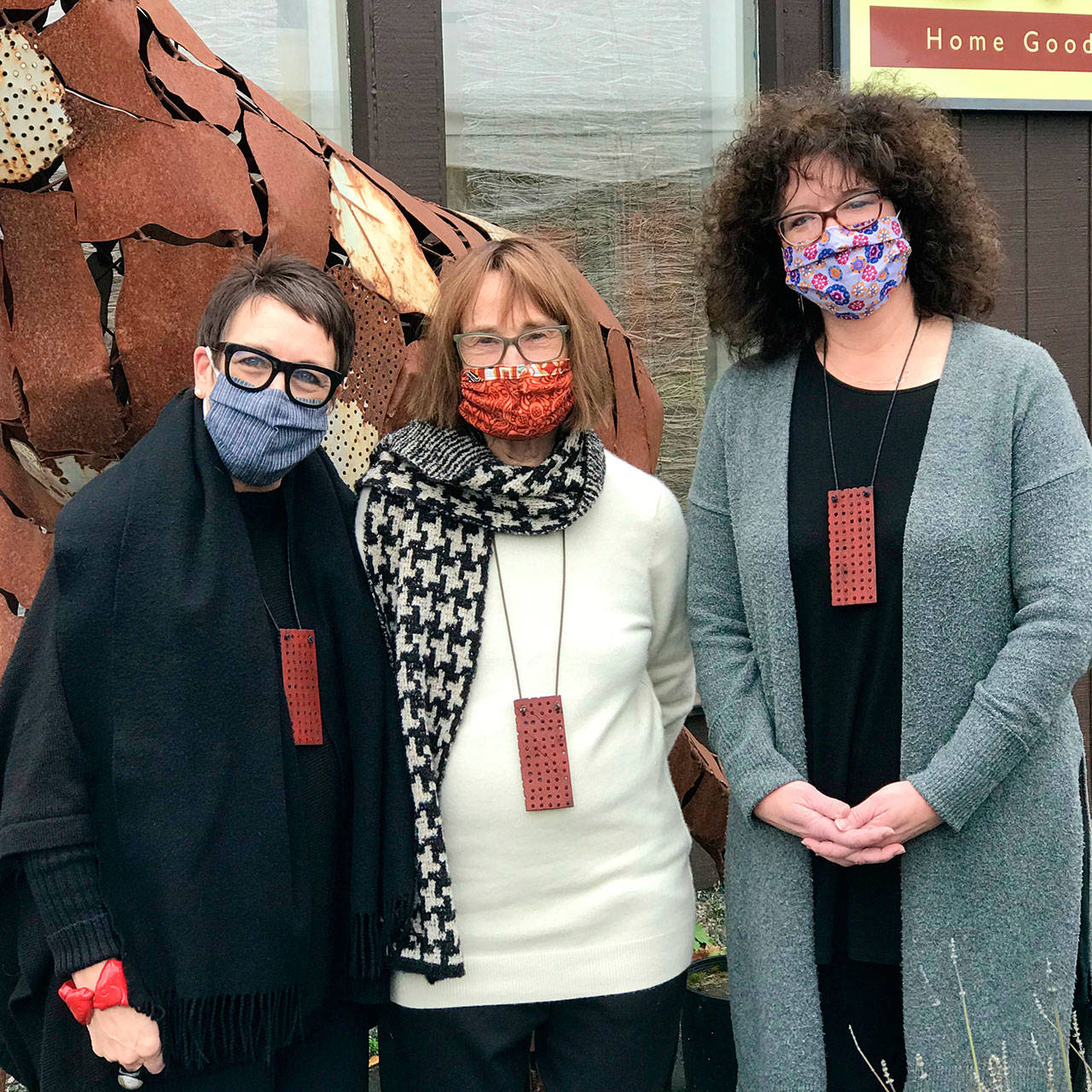By Juli Goetz Morser
For The Beachcomber
When an idea comes to longtime islander and internationally acclaimed artist Julie Speidel, it doesn’t take long before she manifests that vision.
She began her most recent project — necklaces created using the Japanese Shou Sugi Ban wood-burning technique — in March, at the start of the pandemic. They are now being sold at Giraffe, on Vashon, as a piece of wearable art.
“We can blame the virus,” Speidel said, with a touch of humor in her voice. “Making necklaces is something wonderful to do during this time.”
Wonderful indeed, but the project also includes a greater purpose. Money, she said, is not the motivating factor here, rather it is to “do good in the world.” That good includes a collaboration with Giraffe, which like most island businesses took a financial hit these past months, and a donation to Vashon Center for the Arts (VCA), which like most nonprofit arts organizations has also been hit hard.
“Even in the midst of a pandemic, Julie is focused on helping those around her — keeping art ever-present,” VCA’s Executive Director Allison Reid said. “Her gifts as an artist and beloved islander never cease to amaze me. We are honored and grateful for her boundless love and friendship of VCA.”
As for Giraffe, when Speidel first approached owner Priscilla Schleigh about selling her necklaces, Schleigh didn’t hesitate.
“They ticked all my boxes — creative, local and made using an indigenous skill,” she said. “I build relationships with my artisans. It’s business, but it is also about strong relationships. That’s how Giraffe has developed, and that’s how it developed with Julie. She said someone will find clothes to go with the art they are wearing.”
The art that customers will wear — Speidel’s necklaces — trace back to Japan for the artist’s inspiration. Speidel first visited Japan in the 1980s and “fell in love with the Japanese aesthetic,” which, she said, has a strong link to the Northwest. On a subsequent trip to Japan, she learned about Shou Sugi Ban, the ancient Japanese siding technique for exterior surfaces.
The process, she explained, involves charring wood, traditionally Japanese cedar. After the wood cools down, it is cleaned and then finished with natural oil. The Shou Sugi Ban technique is an environmentally friendly way to preserve wood, preventing sun damage, repelling water and making the wood rot, insect and fire-resistant.
“This technique has been used for hundreds, if not thousands of years in Japan,” she said. “The term Shou Sugi Ban translates as ‘the burning of Japanese cypress,’ but a number of woods can be treated in this way, including Babinga, which the necklaces are made from. One side of the necklace is black (from the charring), and one is a matte red, which gives it a beautiful hue.”
Each necklace comes in a distinctive box, wrapped with a special ribbon in the signature style of Giraffe. The art pieces sell for $200, with $50 donated to VCA. Three necklaces have been sold, including one to a visitor from the Bainbridge Island Art Museum, with two more currently on order.
“Her necklaces are stunning in their natural elegance and simplicity – much like the extraordinary sculptures Julie is renowned for,” Reid said. “As an artist, she strikes the right chord, whatever the scale.”
No matter the size nor the medium — from her large-scale metal sculptures seen on Vashon at VCA and Courthouse Square to her not quite 6 inches by 3 inch Shou Sugi Ban necklaces — according to Speidel, “it is art that feeds the soul, and people need it right now.”
“The wonderful thing about the necklaces is that they are a badge of positivity,” she said. “Maybe they can help spread that good word.”


